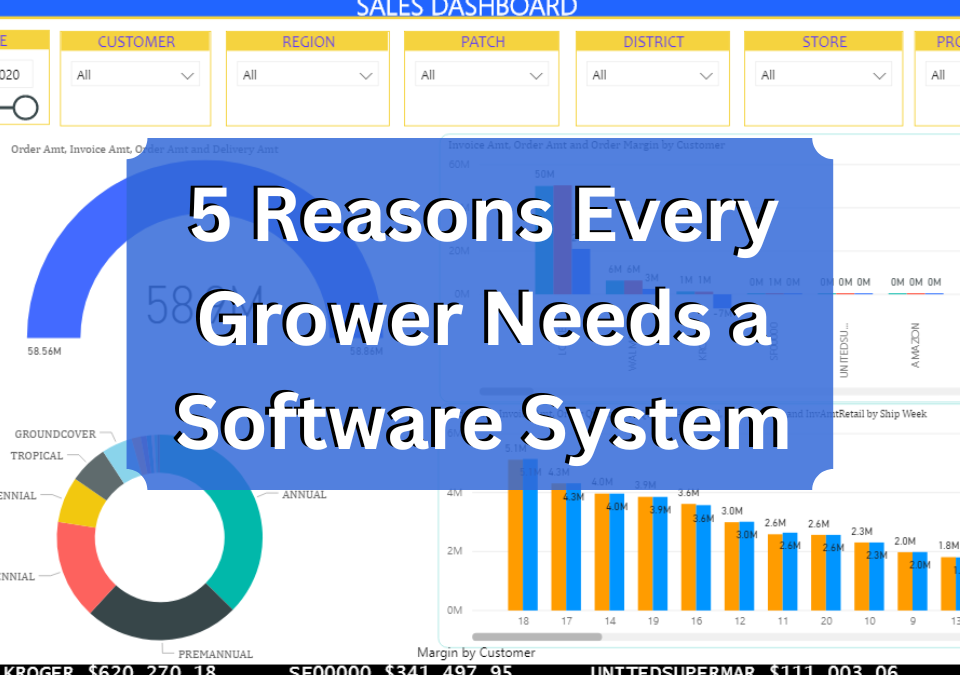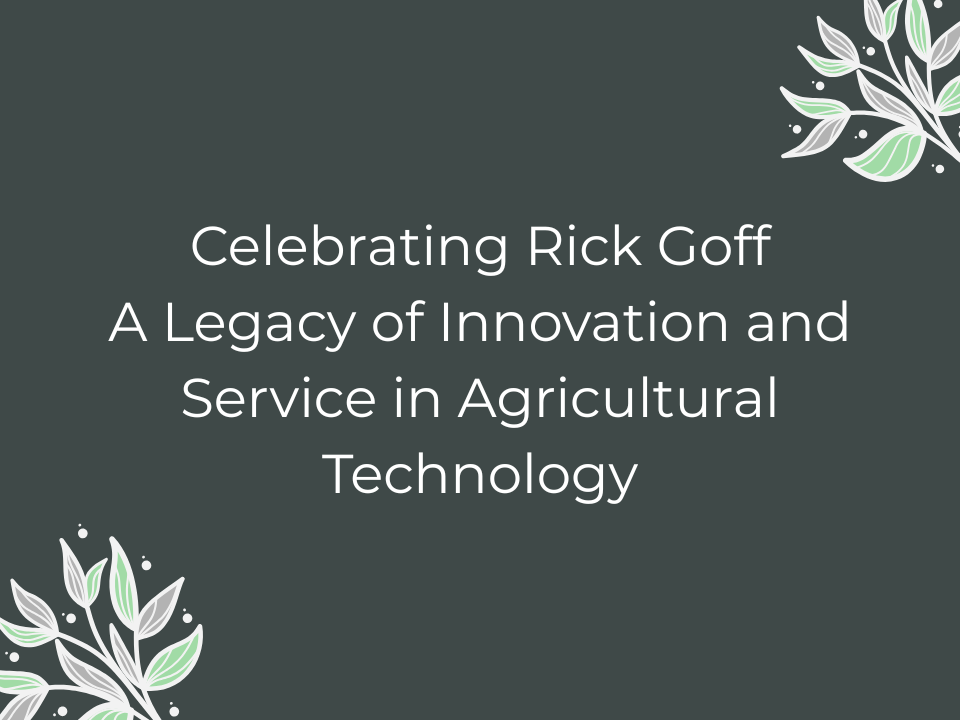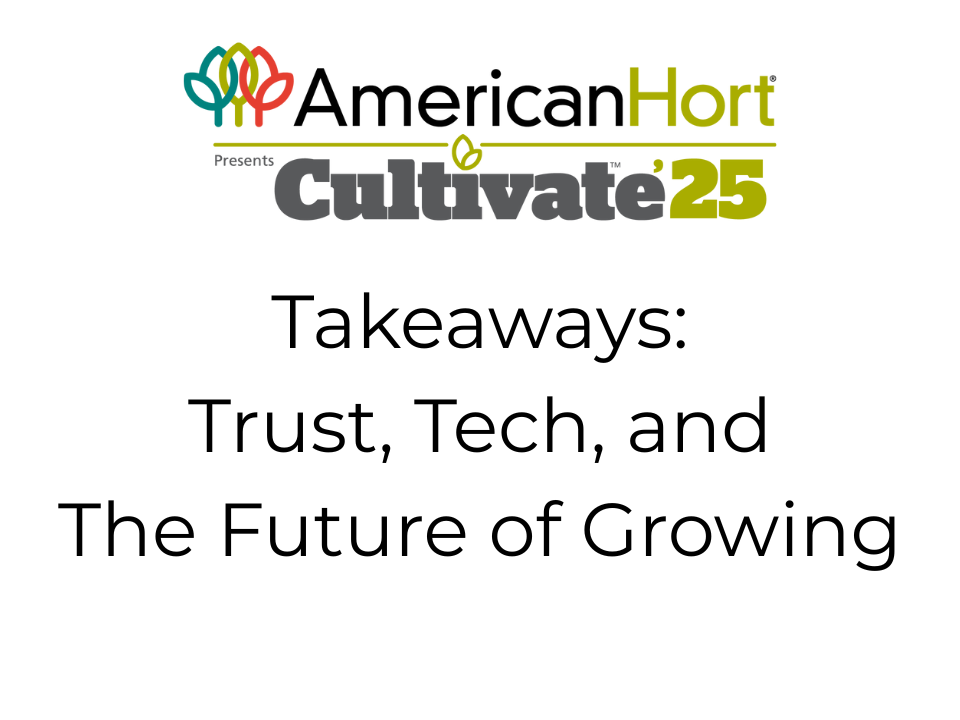
What is an 852 EDI Product Activity Data Document?
July 25, 2023
How To Calculate the Load Capacity on a Truck
August 9, 2023Much like an automated seeder, soil handler, or tree harvester, good grower software becomes a force multiplier in your business.
Like other forms of automation and mechanization in our industry, software brings similar benefits.
But growers who have never experienced those benefits can also be missing the need for that software all around them. This causes growers to ask why do I need a software system? There are myriad reasons and I will cover 5 basic ones here.
1. Align Responsibility
A good grower software system along with support and training aligns the responsibility of managing the system, data, and records. This means that the software does what it was written to do, manage, verify, track, and report your data, and your people can focus on doing the tasks that improve the business and take care of customers.
If a grower, or their staff, maintains their own collection of Excel spreadsheets (or home-grown software) for production, inventory, availability, and sales, the responsibility for the veracity of the data is on the owner of the spreadsheet (or the person who coded the system).
What happens when that key staff member who concocted the macros, wrote the software or created the cathedral of spreadsheets is not available, sick, or worse, leaves the company? I have seen this situation put companies in a serious bind very quickly.
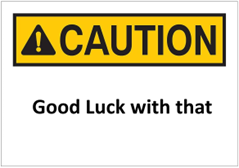
And, since you can copy and send Excel spreadsheets (or other data representation tools) at will you end up with ‘versions of reality’.
Which one is right? Which one is current? Who made the last changes? How do you easily and accurately merge changes from 2 or more sources?
These are just a few of the questions and regular challenges that crop up with a grower having many data ‘fiefdoms’.

I have witnessed many growers waste lots of staff hours chasing data issues because of the ‘versions of reality’ problem.
A grower software system, appropriately sized for your business, can help alleviate these types of problems and, through leveraging the software capability, give your staff back hours to better care for customers, the plants, or the business.
2) Centralize Definitions
Good grower software allows a centralized definition of what a given item is, what it should measure to, and how you track it in terms of units. Without that important function it is easy to fall into playing the ‘find the right data’ game.
“Do we sell these trays 6 per or 8 per this year”?
“This sheet says they are 1” caliper but field 7 is 2” caliper? Didn’t you get the update sheet”?
“I thought our price was $16.99 on these but this sheet says $13.79 wasn’t that the price 2 years ago”?
“Are these tags supposed to say ‘4QT’ or ‘1G’”?
“That’s not what we call this plant, this field is wrong”?
“Is the SKU in this report right, weren’t these broken out by color”?
These are just a few of the types of questions that can arise when your operation plays the ‘find the right data’ game. Too many times, growers suffer due to a lack of centralized definition.
Good grower software allows you to define your items, descriptions, and categorical values (like plant category, size, genus, etc.) in ONE place.
Further, a good software system allows you to also define key units of measure that are tied to items. For example, the pot size, each count per tray, the height or weight, or the caliper size of field trees. Additionally, key aggregation units help with logistics planning such as pots per shelf, plants per rack, or trees per load.
And, the software should facilitate some conversion between each one. This is especially true for calculating load factors and similar for transportation and logistics.
3) Standardize Processes
Good grower software implicitly provides some business processes that must be followed.
For example, new item setup has certain required fields that must have correct values before you can save a record, or a sales order has certain data validations that need to be met before you can ‘post’ it for a pull order or building the load.

Copyright Advanced Grower Solutions
Further, since most software systems allow for role definition and login, additional controls are available to the grower defining who is allowed to do certain actions. Functions such as setting prices, giving discounts, or offering credits are typically more controlled and restricted since they involve financial transactions that must be correct. This aspect of software further standardizes not only the ‘what’ but the who as well.
Excel and similar tools, by virtue of their flexibility, can make the implementation and maintenance of these types of processes more difficult.
Good software systems help standardize key processes like this with the downstream benefit of improving data veracity and accuracy.
4) Normalize Data
According to Merriam-Webster to normalize is to “make something conform or reduce to a norm or standard”.
Good grower software helps implement that process with your data.
Too many times data tools such as Excel allow too much variation in data which leads to errors and eventually poor business results.
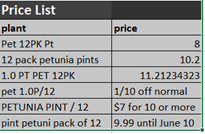
Copyright Advanced Grower Solutions
Good grower software can help with enforcing data formatting rules and help with maintaining consistent data types, and improving data normalization, accuracy, and usefulness.
Normalized data has several business advantages:
- Better understanding among staff
- More accurate reports – especially those that do derivative calculations on many rows of data
- Foundation for certain types of data automation
- Basis for business intelligence (BI) implementations

Copyright Advanced Grower Solutions
5) Analytic Foundation
All the above comes together to allow for building an analytic foundation for your business.
Right processes, filling in the right data, that is formatted, typed correctly, and normalized, sets the stage for analytic and data automation, business intelligence reporting, visualizations, and predictive analytics.
The trove of data in your grower software system, when linked correctly with other sources of external data can be a competitive advantage.
Automated reporting and metrics calculations can be set up to further ‘bring actionable data’ to the people. Your staff spends far less time building, cleaning, linking, and summarizing data sets to be basic status and answers and more time solving the real problems for your business.
This is where online and mobile-friendly dashboards bring key, necessary information directly to the user without a lot of staff work.

Effective dashboards help improve decision making in your business
Bottom Line
Choosing a grower software system is time consuming and expensive.
A grower needs to plan on spending the time to get it right. Hopefully, these benefits areas can help you see the need for a good system and what can be derived from it.
AGS employs a consultative sales process to help you make the best decision for your operation and goals.
Contact us to learn more.

